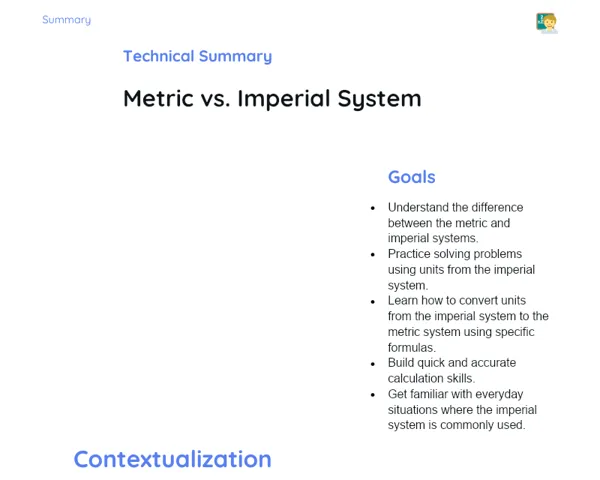Summary Tradisional | Angles: Clocks
Contextualization
The angles made by the hands of a clock provide a fascinating example of how mathematics finds its way into our everyday lives. Every tick of the clock results in different angles, and understanding this offers us not just a mathematical insight but also practical utility in areas like navigation, aviation, and even programming.
Historically, measuring time has been central to organising communities. Long ago, the ancient Egyptians used sundials, and over time, with technological progress, we moved on to mechanical and later electronic clocks. Grasping the way clock hands create angles is a key mathematical skill that mirrors the evolution of our timekeeping methods and continues to be relevant in our daily routines.
To Remember!
Definition and Concept of Angles in Clocks
Angles are created when two rays share a common starting point. In clocks, the hour and minute hands form these angles. If you observe a traditional clock, you will notice that as the hands move, they continuously form different angles. These angles, measured in degrees, are not only important in solving mathematical problems but also in understanding time and spatial relationships.
On a clock, the full circle is 360 degrees. This means every shift in the hand creates a unique angle. The ever-changing positions of the hands throughout the day lead to an endless variety of angles.
Knowing how these angles are formed and calculating them is an essential skill in geometry. It helps students appreciate mathematical concepts more deeply and see their application in real-life situations.
-
The angle created by clock hands is measured in degrees.
-
The complete clock face is divided into 360 degrees.
-
Every movement of the hands produces a distinct angle.
Movement of the Hands
A clock’s hands move in a smooth and predictable fashion, forming specific angles as they do so. The hour hand moves 30 degrees each hour because the full circle (360 degrees) is split over 12 hours. This implies that every hour passed, the hour hand moves by 30 degrees.
On the other hand, the minute hand is much quicker, making a full circle every 60 minutes. This translates to a movement of 6 degrees per minute since 360 degrees divided by 60 minutes equals 6 degrees.
This difference in speeds is key to understanding how to work out the angle between the hands at any moment.
-
The hour hand moves 30 degrees per hour.
-
The minute hand moves 6 degrees per minute.
-
The angle depends on the relative positions of the hands.
Formula to Calculate Angles
To find the angle between the hour and minute hands, we use the formula: Angle = |(30*hours - (11/2)*minutes)|. This formula takes into account the differing movements of the two hands and their positions.
Here, '30*hours' represents how much the hour hand has moved, while '(11/2)*minutes' (or 5.5 times the minutes) shows the movement of the minute hand. The use of absolute value ensures that the angle is always positive regardless of which hand is ahead.
This neat formula makes it much simpler to calculate angles accurately.
-
The formula is: Angle = |(30*hours - (11/2)*minutes)|.
-
The term '30*hours' shows the hour hand's movement.
-
The term '(11/2)*minutes' accounts for the minute hand's movement.
Practical Examples
Let’s put this formula to use with some practical examples. For example, to calculate the angle at 08:15, we substitute into the formula: Angle = |(30*8 - (11/2)*15)| = |(240 - 82.5)| = 157.5 degrees.
Another case is at 12:34. Plug the values in to get: Angle = |(30*12 - (11/2)*34)| = |(360 - 187)| = 173 degrees. These examples illustrate how the formula works in practice to give accurate results.
Working through these examples is a great way for students to grasp the concept and boost their confidence in solving similar problems on their own.
-
Example: Calculating the angle at 08:15 using the formula.
-
Example: Calculating the angle at 12:34 using the formula.
-
Hands-on practice helps reinforce the concept.
Key Terms
-
Angles: Geometric figures formed by two rays sharing a common point.
-
Clock hands: The moving parts of a clock that show hours and minutes.
-
Angle calculation formula: Angle = |(30*hours - (11/2)*minutes)|.
-
Movement of the hands: How the clock hands shift, forming various angles.
-
Absolute value: A mathematical operation that ensures the result is positive.
Important Conclusions
In this session, we delved into how the movement of clock hands results in different angles. We saw that the hour hand moves 30 degrees per hour, while the minute hand moves 6 degrees per minute, and by applying the formula Angle = |(30*hours - (11/2)*minutes)|, we can precisely determine the angle at any given time.
These concepts not only broaden our mathematical understanding but also have useful applications in fields like aviation and navigation. Being able to compute these angles is a practical skill for both day-to-day and professional challenges.
By working through real-life examples and discussing common mistakes, students can further solidify their understanding. We encourage everyone to explore further and apply these insights in various contexts.
Study Tips
-
Review the worked examples and try solving similar problems independently to boost your understanding.
-
Practice calculating angles at different times using the discussed formula and compare answers with your classmates or teachers.
-
Look into the history of clocks and explore how angle calculations extend to fields like navigation and aviation for a broader perspective.


